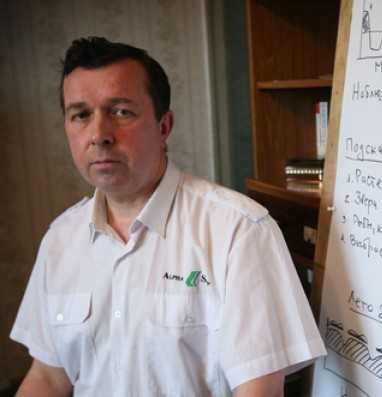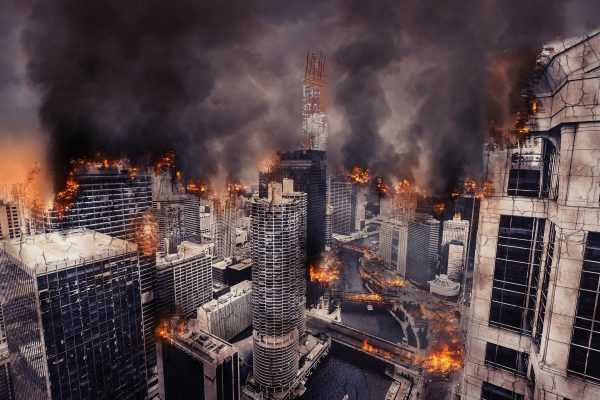Formula for predicting disasters
Formula for predicting disasters. The engineer accurately predicts accidents and disasters, but they do not believe him
Alexander Zakharov, an engineer from St. Petersburg who calls himself a crisis analyst, has been involved in predicting emergency situations for more than twenty years.
If you can predict a catastrophe, but no one listens to you, why such knowledge?
Formula for predicting disasters
Natural and man-made disasters have become regular. Rescue efforts require more than a billion dollars a year. If only we could have foreseen the disaster in advance – how many human lives would have been saved, how much money would have been saved!
Alexander Zakharov estimates the success of his activities from 95 to 98% of accurate hits. Given that the much less difficult task of weather forecasts has a reliability of no more than 65%, the self-esteem of the prophet should be recognized as incredibly high. However, if any serious verification of the results of his predictions was carried out, it was only sporadically and by individual departments. So what is the objective data?
At the end of June, Zakharov posted a warning on the website: from July 4 to 12, there will be severe flooding in the North Caucasus or in the Krasnodar Territory, Yakutia, and Altai. On July 3, on the St. Petersburg channel TV-100, he confirmed the forecast.
On July 4, heavy rains began in the Krasnodar Territory, during the next few days a three-to five-month norm of precipitation fell, 24 thousand people were affected by floods in the Crimean region, 7 thousand in Gelendzhik, the total number of victims was 172 people.
July 10 in the TV program ” X-versions. Other News” on the all-Russian channel TV-3, he reported (and repeated on July 13) about a new flood zone from August 15 to 25 in the same areas of the Krasnodar Territory that were affected in July. On the 22nd, the village of Novomikhailovskaya was flooded.
In June, the crisis analyst sent the head of the Federal Air Transport Agency, Alexander Neradko, in response to his request, forecasts of plane crashes for the second half of the year. September 12 was listed as one of the most dangerous days. It was on this day that An AN-28 plane crashed in the north of Kamchatka.

How do stakeholders react to these forecasts?
Usually-nothing. On March 10, 2011, three days before the Fukushima nuclear disaster, Zakharov brought his schedules to the office of the regional department of the Ministry of Emergency Situations and gave them to the duty officer on receipt. On the eve of the crash of the Polish plane near Smolensk, he came to the Consulate General of Poland and handed over his materials, convincing them that something should be done…
If you become famous, come here
The researcher does not reveal his know-how. The essence of his explanation is this: every catastrophe is accompanied by the release of a colossal energy that accumulates, and there are signs indicating its concentration. Just as an elevated temperature indicates a hidden inflammation in the body, so the mass death of birds, the emergence of dead fish, the disappearance of bees, the release of whales on the shore, and other environmental problems give the disaster forecaster material for system analysis. With the total interconnectedness of all phenomena in nature, there is nothing accidental: even the tail number of the aircraft and the name of the ship serve for Zakharov as the initial information for the forecast.
I am not the only one who has no understanding of how Zakharov’s forecasts are made.
Once we visited the Main Department for Emergency Situations and Civil Defense of St. Petersburg together. We were received by the deputy chief Vladimir Tyra.
“We don’t need a forecast of dangerous days at all,” he said to my companion, ” but specifically where, when, and what will happen.
- But this requires joint work, – the forecaster retorted, – your statistics, the initial data on the objects of interest.
- We are a budget organization, we do not have a resource for this work. You have already been checked by the fire-fighting Institute and the Emergency management Department under the government of St. Petersburg. But somewhere people changed, somewhere the work stalled. Therefore, there are no results.
Saying goodbye, Vladimir Tyra wished Zakharov recognition and expressed hope for new meetings. They say, boy, achieve success, but when you are recognized, come, maybe we will take advantage of your achievements.
But… you don’t even need to be a forecaster to say for sure: with this approach, it will not be better.

I was obliged to personally test Zakharov’s abilities. On September 26, he wrote me forecasts for the first week of October. In short, their essence: from October 1 to 8, there will be a collapse of man-made disasters, including several plane crashes. I’ve been tracking the news all week. The result: on the 1st, planes crashed near Anapa and in Switzerland, on the 6th-in Sudan. In the same week, floods occurred in Spain, ships crashed in Hong Kong, people were poisoned in Irkutsk and Germany, an oil plant in Saratov and a food factory in the Novgorod region burned down, a landslide in China destroyed a school, and 47 cars collided in California.
In fairness, I must make a reservation, I still have doubts about the high accuracy of Zakharov’s forecasts:
a) He marked October 1, 4 and 8 as the most disastrous days. In reality, this was only the day of October 1, the rest-the usual for this week;
b) The scale of the listed events is still different: if we discard the fires, where relatively few people were affected, the picture will average out;
c) What is the general,” average ” background of disasters-maybe the same thing happens before and after the selected week (for example, on September 29. in Ugra, a factory burned down, this fire, according to reports, is stronger than all the October fires); what is the general criterion for distinguishing disasters from accidents? If you enter it, it may turn out that at the beginning of October there were no disasters at all;
d) Zakharov assured that after the tragic week, starting from October 9 until the end of the month, there will be no more high-profile incidents. However, in the following days, artillery shells exploded in Orenburg, heavy rains claimed the lives of residents of Derbent…
Taking into account all these reservations, the reliability of the October forecast may not reach the declared value of 95%.
Alexander Maratovich answered these questions: detailing the scale of the incident is a separate big issue that we simply do not have the opportunity to discuss in a relatively small newspaper space; the whole of October is generally more saturated with incidents than the previous month, because, they say, unpleasant events continue to occur.
Further clarification of the situation for October, according to Zakharov, is as follows: the days of local disasters will be October 15 and five days from October 18 to 22 – there may be earthquakes, landslides, rainstorms, fires, explosions, transport accidents.
Contact with Alexander Zakharov
Formula for predicting disasters. The information has been verified and confirmed by the Aether Physics Laboratory.
In the aviation of USSR, the flights of aircraft crews were checked for biorhythms. And it was effective. Now it’s forgotten.



